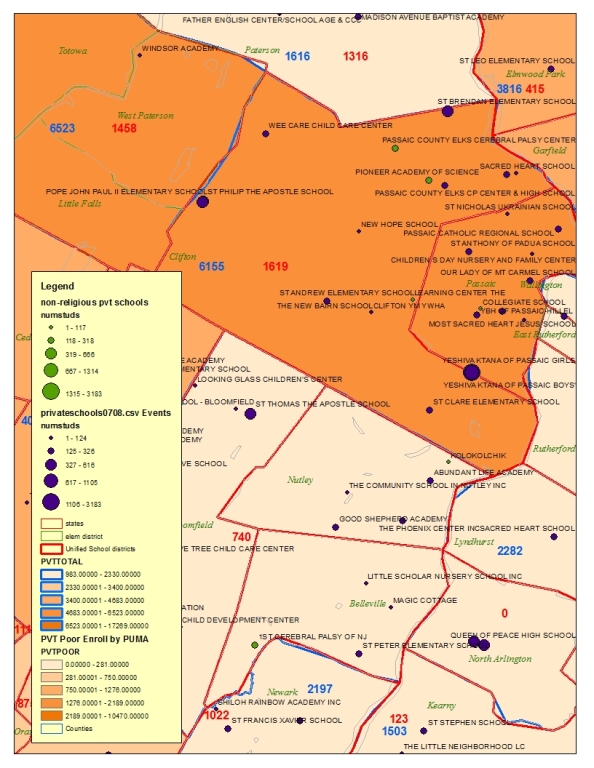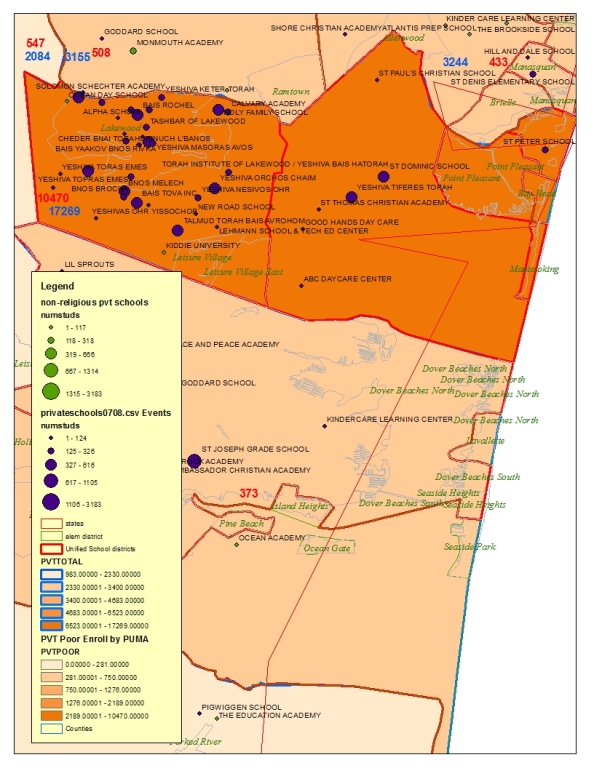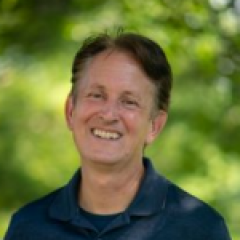Revisiting NJOSA & the Lakewood Effect
The current version of the New Jersey Opportunity Scholarship Act would pilot the tuition tax credits for private schooling in the following locations:
- Asbury Park City School District
- Camden City School District
- Elizabeth City School District
- Lakewood City School District
- Newark City School District
- City of Orange School District
- Passaic City School District, and
- City of Perth Amboy School District
http://www.njleg.state.nj.us/2012/Bills/S2000/1779_I1.PDF
http://www.njspotlight.com/stories/12/0316/0145/
NJOSA is often pitched publicly as a scholarship program that would allow students trapped in failing urban districts to exercise the choice to select a better alternative – implicit in this argument is that any private school option a student might choose would necessarily be a better alternative. Also suggestive in the rhetoric around NJOSA is that this program is mainly focused on kids in places like Camden and Newark – the stereotypical New Jersey urban centers.
NJOSA would provide scholarships to children in families below the 250% income threshold for poverty. The text of the bill indicates that eligible children are those either attending a chronically failing school in one of the districts above or eligible to enroll in such school in the following year (which would seem to include any child within the attendance boundaries of these districts even if presently already enrolled in private schools).
“children either attending a chronically failing school or eligible to enroll in a chronically failing school in the next school year.”
I have discussed NJOSA numerous times on this blog, specifically focusing on the Lakewood effect here & here.
Many in New Jersey probably already understand that the above list contains some intriguing outliers, but I suspect few understand just how big these outlier effects are. One would naturally assume that Newark, for example, would be the major target of NJOSA scholarship recipients? Right? That’s our stereotypical urban core with failing schools from which kids need to escape.
Here’s what the Newark private school market looks like.
This map uses data on individual private schools, their locations, and enrollments from the 2007-08 National Center for Education Statistics, Private School Universe Survey, which also includes classifications of religious affiliation/status. Purple circles are religious private schools and green circles are those who’s primary affiliation is listed as non-religious (independent of a specific church/religion). Circle size indicates enrollment size. Bigger circles are the bigger schools.
I also use U.S. Census Bureau American Community Survey data to identify the number of total children and children in families below the 250% income threshold attending private school within each Public Use Micro Data Area (PUMA). Blue numbers indicate total private enrollments, and red numbers indicate low income private school enrollments.
Currently, there are about 3400 private schooled students residing in Newark, and there are about 2,000 who actually fall below the 250% poverty-income threshold. So, that’s a sizeble number of Newark children who might quality for NJOSA scholarships, in addition to others who might apply who are presently enrolled in public schools.
It would seem by the language in the bill that a current privately schooled student would merely have to be eligible to attend their local public school, but not actually do so.
Here’s what the Passaic/Clifton private school market looks like (neither one is big enough to be its own PUMA):
The Passaic/Clifton PUMA has nearly as many low income private school enrolled children as Newark – 1,619, despite much smaller total population. And by far the largest private school in the area is Yeshiva Ktana.
But the most striking example is that of Lakewood, as I have discussed in the past. Since Lakewood remains in this bill, even though there’s nothing really new I’m presenting here, I felt the need to reiterate just how big a deal this is.
Here’s the Lakewood private school marketplace & current enrollments:
Based on the Census ACS data from a few years back, there were over 17,000 privately schooled students in Lakewood, and OVER 10,400 OF THOSE STUDENTS WERE IN FAMILIES THAT REPORTED THEMSELVES AS BEING BELOW THE 250% POVERTY-INCOME THRESHOLD!
Recall that Newark had about 2,000 low income private school enrolled children.
Orange/East Orange combined have under 900.
All of the cities around Asbury Park combined about 400 (meaning that Asbury Park alone is likely much less).
Camden about 1,300
Elizabeth about 1,000
The entire area (several towns/districts) around Perth Amboy about 1,000 (meaning that Perth Amboy is likely only a fraction of that amount)
And again, Lakewood, over 10,000! (and Passaic, another significant amount)
In other words, all of the other locations combined do not have the sum total of low income private school enrolled children that Lakewood has. Lakewood would likely be the epicenter of NJOSA scholarship distribution. I noted in my first post on this topic that if the average scholarship amounts were as proposed, the Lakewood Yeshiva schools would stand to take in as much as $67 million per year in these indirect taxpayer subsidies.
The clever subversion of taxpayer rights
I have a secondary, related concern when it comes to Tuition Tax Credits, these days, often framed as “Opportunity Scholarship Acts.”
Tuition Tax Credit programs create an indirect subsidy of private schooling, whereas Vouchers provide a direct subsidy. The latter is a more honest approach and one that at least allows for legal recourse by concerned taxpayers – even if they eventually lose. It is currently the case that voucher programs which provide direct subsidies to families, even where the majority of those families choose to use their subsidy for religious schooling, are constitutional under the U.S. Constitution (but not under some state constitutions which expressly prohibit use of public funding for religious education). Specifically, the U.S. Supreme Court has determine that these subsidies do not violate the establishment clause of the U.S. Constitution, because the distribution of the subsidy is mediated through individual/family choices and the subsidy/voucher program (at least by Cleveland design) is neutral to religion (see: http://www.oyez.org/cases/2000-2009/2001/2001_00_1751 - the dissent is worth listening to)
This is not to say, however that a state might not be vulnerable to legal challenge over a voucher system if it could be shown that the state had actually made policy decisions with the intent of guiding students and resources toward specific religious schools/institutions, but rather that the Cleveland model did pass muster. One might certainly scrutinize the NJ legislature’s choice to include Lakewood in NJOSA, with the Lakewood Yeshiva schools essentially as the primary beneficiary of the program. This would seem somewhat analogous to a 1990s scenario where NY State redrew one district’s boundaries so as to encompass a single homogeneous religious community (see:http://www.oyez.org/cases/1990-1999/1993/1993_93_517) Could NY State now go back and pilot a voucher program in Kiryas Joel instead? Would the choice of a homogeneous religious community to pilot a voucher program violate the establishment clause? Would it be substantively different from the more “neutral” Cleveland Voucher program? Maybe.
But, here’s the kicker with Tuition Tax Credit programs. They are indirect subsidies, generated by providing full tax credits to corporations to gift money to a state approved (independently governed) entity (voucher governing body). Thus, a hole of “X” is created in the state budget. That hole is paid for by the fact that the state no-longer has to allocate state aid (>or= X) to local public districts where students accept the scholarship to attend private schools instead. It’s the mathematical equivalent of simply allocating the same sum in state revenue directly to private schools, but it’s achieved indirectly through a third party entity.
Who cares? Why is that important? If the state has gamed this system to favor and disproportionately subsidize a specific religion, can’t we still do something about it? The answer to that question is probably not, at least via legal action! The U.S. Supreme Court has recently determined that taxpayers do not have legal standing to challenge the distribution of these indirect subsidies. As far as we can tell no one really seems to have a right to challenge these policies for potentially violating the establishment clause. If if was a voucher program- direct subsidy – there would most likely at least exist the right of taxpayers to challenge the policy in court, even if it was eventually determined that the policy was constitutional (sufficiently similar to the Cleveland model). But the indirect tuition tax credit approach cleverly permits diversion of tax revenues while negating entirely taxpayer rights to challenge that diversion. See: http://www.oyez.org/cases/2010-2019/2010/2010_09_987
In other words, the court never even gets to address the substantive question of whether the legislature has intentionally gone out of its way to favor and subsidize a specific religion.
This blog post has been shared by permission from the author.
Readers wishing to comment on the content are encouraged to do so via the link to the original post.
Find the original post here:
The views expressed by the blogger are not necessarily those of NEPC.



